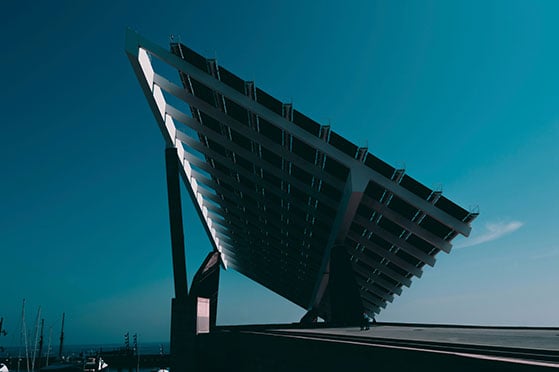Will the COP26 Summit in Glasgow go down as a moment of intense discussion or as a pivotal turning point in the movement towards true clean energy change? U.S. President Joe Biden has pledged to join world leaders in accelerating climate-connected goals, and there’s been strong sentiment towards phasing out coal entirely. Yet outside the conference, the numbers tell a different and more complex story. Since 2000, coal production in the Asia Pacific region has jumped more than 60 percent.
A rapid, global shift to clean energy is a lofty goal. As much of the world moves away from fossil fuels in favour of nuclear, hydro, wind and solar power, it’s started to impact businesses and will continue to do so. Meanwhile, the conversation about sustainability and net-zero emissions continues to inspire further action—and the clean energy transition plays a major role.
Notably, consumers have also grown increasingly conscious of the environment. They want to know more about how businesses impact sustainability. Measures such as SFDR (the Sustainable Finance Disclosure Regulation) and the TCFD (Task Force on Climate-related Financial Disclosures) have further highlighted the importance of ESG factors for many companies.
The energy shift, then, is no longer a back burner issue or a “nice to have.” A major topic at every company level, it’s also a central thrust of COP26. That means it’s high time to look at the impacts this transition will have today and in the future.
What Does the Transition Look Like?
One answer: It looks like now. Companies are acting on plans based on regulation, consumer pressure or both. What’s more, renewable energy has also become more competitively priced as the solar/wind industries mature.
Six areas will define the change we should expect to see; we can think of these as falling under the acronym “DIADEM.” At present, companies are moving to:
- Decarbonise energy sources
- Identify new investment priorities
- Adjust to new policy mandates
- Deploy new technologies
- Expand operational energy efficiency
- Manage consumer and shareholder expectations
It’s worth noting that every business must tackle these in ways that suit them, in the areas that most apply. That could include, for example, moves to employ new tech, join new partnerships, and change up cost structures.
Here’s how this could affect different sectors.
Utilities
Here we see a transition to a decarbonised model, with many companies using mixed options of coal and renewable energy. More than ever, they’re using front-of-the-meter (i.e., offsite) energy storage assets to smooth renewable energy integration and the delivery of additional grid services that address regulation. It also means updating grids and applying more advanced information to increase flexibility, reliability, and resilience.
Real estate
Here, increasing operational efficiency is a big factor. A good growth foundation is in place: Policies geared toward efficiency measures and tracking have impacted it. That also means increased monitoring on energy usage, upgraded equipment, and installation of automation systems to control lighting/heating, ventilation, and AC—coupled with growth in high-efficiency AC/heating/refrigeration systems.
Transportation
The key concept here is electrification. More of it will reduce oil demand. Sales of electrical vehicles (EVs) have a way to go, though the electrification of fleet vehicles in the industrial sector could move things along.
Finance
In greater numbers, consumers are demanding to see how portfolios highlight ESG-conscious companies and invest in them so they can create a more sustainable infrastructure. The need for increased regulation and reporting with investments links to SFDR. Companies must disclose more information in a common framework to help people and companies make informed decisions on where to invest.
How Will the Clean Energy Transition Disrupt Industries in Coming Years?
Much progress has been made and is accelerating thanks to economic factors, societal pressure, and new technology. This transitional period will push us closer to meeting our net-zero emission goals, according to the IEA’s World Energy Outlook report. Expect much of the world to cut coal usage and see some disruptions as an effect of that.
While the Asia Pacific region continues to depend heavily on coal, there's been a rapid decline elsewhere. World coal consumption fell 4.2% in 2020, its fourth decline in six years. Coal is the most carbon-intense fuel for electricity generation, and cost-ineffective compared to renewable energy options. A drop in new plant construction will multiply efforts to manage a decline in emissions from existing assets.
Progress in the above areas will keep us moving toward decarbonised energy use. But disruption also comes into play, which includes changing consumer habits and preferences. Meanwhile, market disruptions may slow progress in other areas as budgets are adjusted and disruptions moved past.
As argued by some politicians, the transition must come with job and electricity security. That said, clean energy will create huge job opportunities. It's part of a wider net that must also take equity, inclusion, affordability, access, and sustainable economic development into account.
This transition needs to include everyone. Eradicating energy poverty must be addressed—and all parts of the global population should have access to modern energy.
Putting it all together: With sustainable energy, the power is now
Again, the transition is already happening. More and more, companies need to understand how sustainability impacts their business and the world. Rio is here for you. Our software uses built-in ESG framework requirements, real-time data visualisation, and easy data management. We help entities set goals, collect material data consistently, and then analyse and display data in a meaningful way. We invite you to take your next steps in embracing clean energy by bringing us on as a committed collaborator.
How can Rio help you? Contact us at rio.ai or schedule a meeting/send us a message

-1.png?width=2800&height=1400&name=Blog_%20Featured%20Images%20(1)-1.png)
-1.png?width=2800&height=1400&name=Blog_%20Featured%20Images%20(1)-1.png)